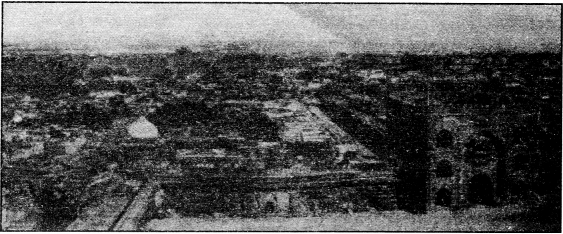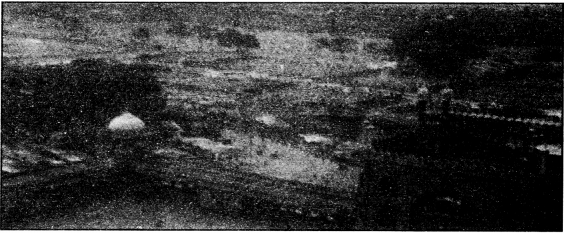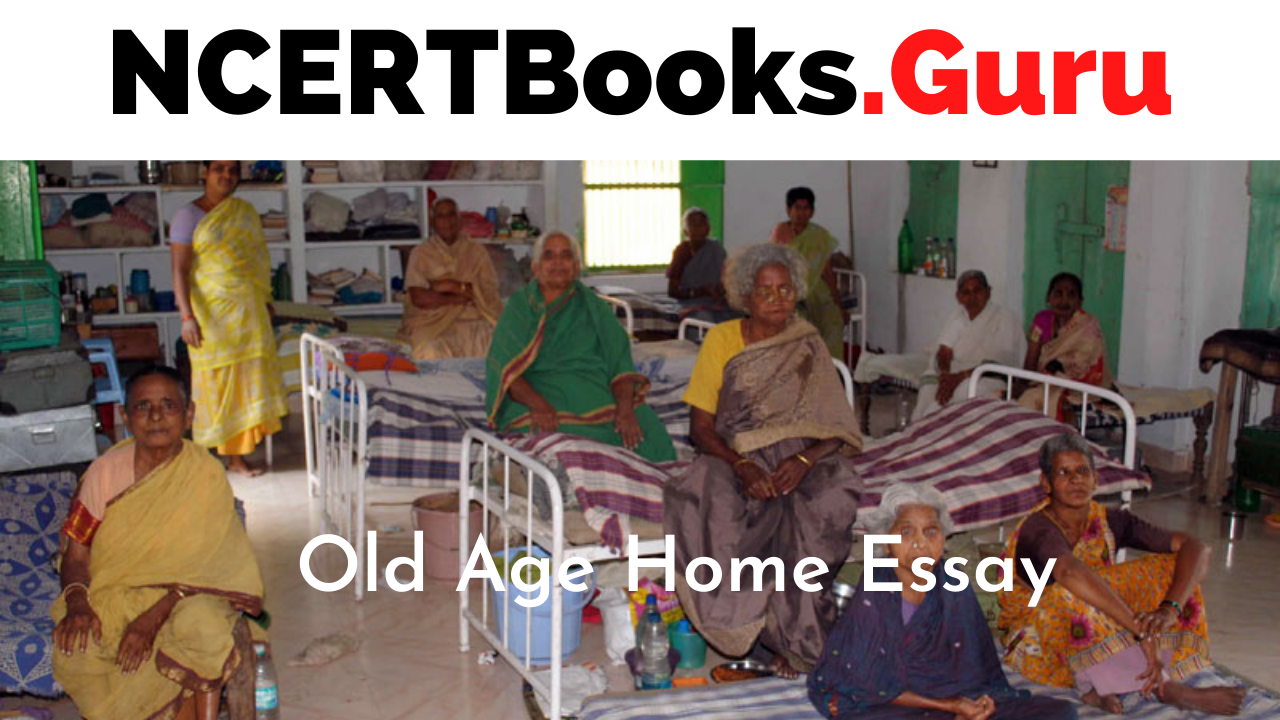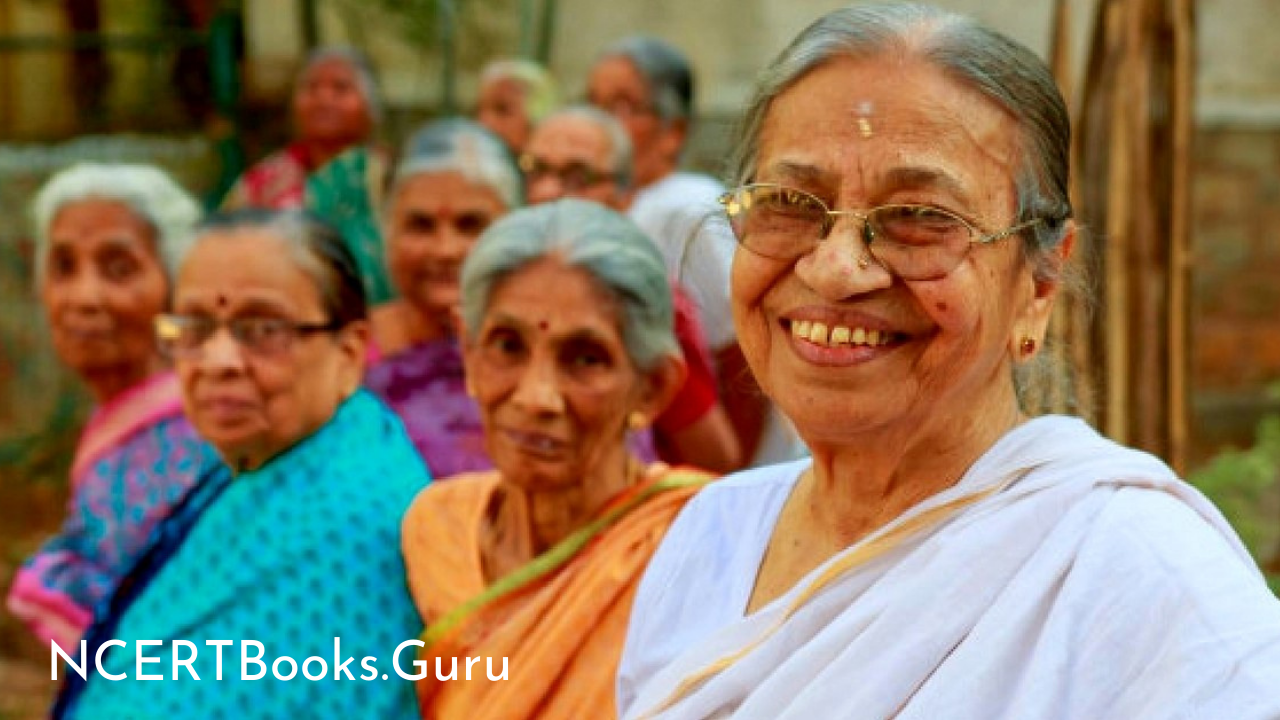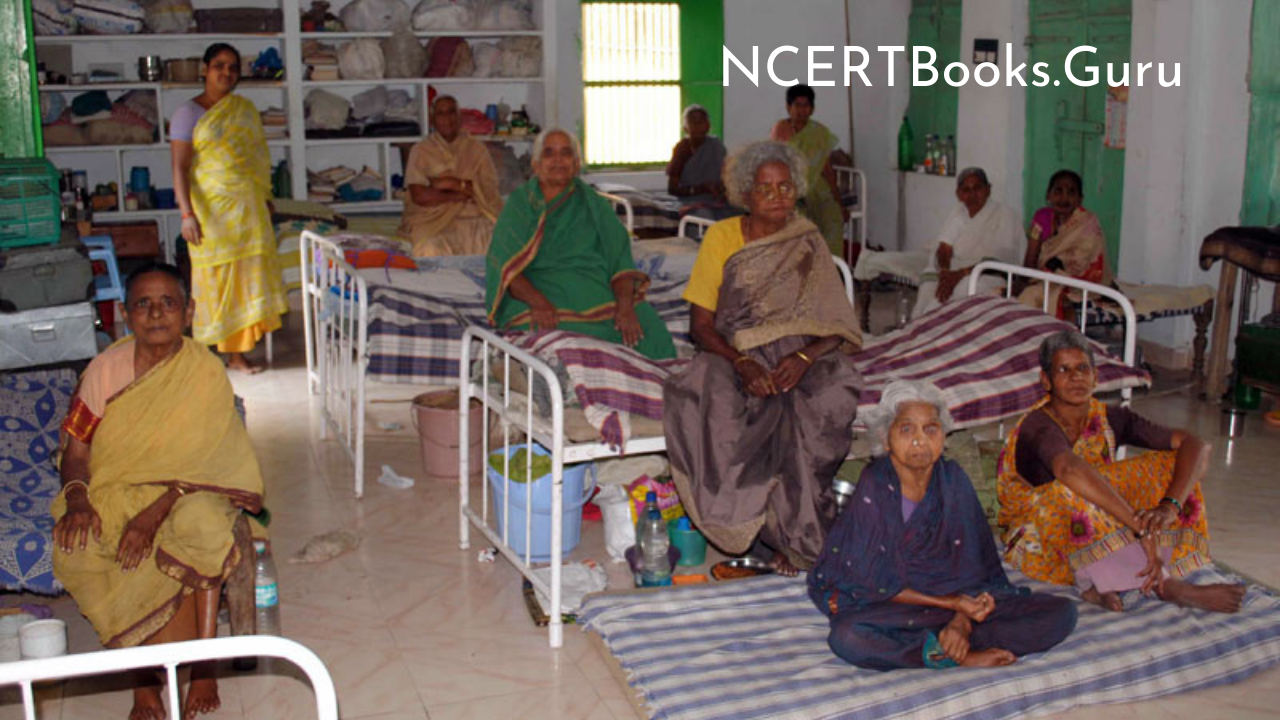NCERT Solutions for Class 9 Social Science Geography Chapter 4 Climate
Textbook Exercises
Question 1.
Choose the right answer from the four alternatives given below:
(i) Which one of the following places receives the highest rainfall in the world
(a) Silchar
(b) Mawsyi train
(c) Chefrapunji
(d) (Guahati)
Answer:
(c) Chefrapunji
(ii) The wind blowing in the northern plains in summers is known as:
(a) Kalbaisakhi
(b) Loo
(c) Mountain
(d) None of the above
Answer:
(b) Loo
(iii) Which one of the following causes rainfall during the winters in north-western part of India.
(a) Cyclonic depression
(b) Rdtrating Monsoon
(c) Western disturbances
(d) S.W. Monsoon
Answer:
(d) S.W. Monsoon
(iv) Monsoon arrives in India approximately in:
(a) early May
(b) early July
(c) early June
(d) early August
Answer:
(c) early June
(v) Which one of the following tihcrac-terises the cold-weather season in India?
(a) Warm days and warm nights
(b) Warm days and cold nights
(c) Cool days and cold nights
(d) Cold days and warm nights
Answer:
(c) Cool days and cold nights
Question 2.
Answer the following questions:
(i) What are the factors affecting the climate of India?
Answer:
The factors affecting the climate of India are as under :
1. Latitude:
The Tropic of Cancer passes through the middle of the country from the Rann of Kuchchh in the west to Mizoram in the east. Almost half of the country,-lying south of the Tropic of Cancer, belongs to the tropical area. All the remaining area, north of the Tropic, is in the ‘sub-tropics. Therefore, India’s climate lias traits of tropical as well as subtropical climates.
2. Altitude:
India has mountains to the north, which have an average height of about 6,000 metres, with the highest peaks (some of them amongst the highest in the world) rising above 8,000 metres above sea level. India also has a vast coastal area where the maximum elevation is about 30 metres. The Himalayas prevent the cold winds from Central Asia from entering the subcontinent. It is because of these mountains- that the subcontinent experiences comparatively milder winters. Also, temperature differences are minimised between die tropical and subtropical India.
3. Pressure and Winds:
The climate and associated weather conditions, in India, are governed by (a) pressure and surface winds, upper air circulation, western disturbances, and tropical cyclones.
The pressure and wind conditions over India are unique. During, winter, there is a high-pressure area north of the Himalayas, Cold dry winds blow from this region to the low-pressure areas over the oceans to the south: In summer, a low-pressure area develops over interior Asia as well as over the region surrounding the Arabian Sea, including northwestern India. This causes a complete reversal of winds during summer. Air moves from the high-pressure area over the southern Indian Ocean, in a south-easterly direction, crosses the equator, and turns right towards the low-pressure areas over the Indian subcontinent. These are known as the South-west Monsoon winds. These winds blow over the warm oceans, gather moisture and bring widespread rainfall over India.
The upper air circulation ia this region is dominated by a westerly flow. An important component of this flow is the jet stream. Jet streams are high velocity winds blowing, through a narrow zone in the upper troposhere. These jet streams are located approximately over 27°- 30° north latitude, therefore, they are known as subtropical westerly jet streams. Over India, the subtropical westerly jet stream blows south of the Himalayas, all through the year except in summer, The western disturbances experienced in the north and north-western parts of the country are brought in by this westerly flow. In summer, the subtropical westerly jet moves north of the Himalayas with the apparent movement of the sun. An easterly jet stream, called the tropical easterly jet blows over peninsular India, approximately at 14°. N during the summer months.
4. Relief:
The Himalayas act as a great barrier and save India from cold winds of Central Asia. On the other hand, the Western Ghats and the Khasi Hills in Meghalaya lie right across the path of the monsoon winds and cause heavy rainfall.
5. Location:
Being surrounded by the Arabian Sea, the Indian Ocean, and the Bay of Bengal, India gets lots of monsoon winds. On the other hand, the desert area causes much heat.
The climate of India in fact is also influenced by the climatic conditions over the rest of Asia.
(ii) Why does India have a monsoon type of climate?
Answer:
India has a monssoon type of climate because it is strongly governed by the monsoon winds.
(iii) Which part of India does experience the highest divemal range of temperature and why?
Answer:
The Thar Desert experiences the highest diverual range of temperature due to its location.
(iv) Which winds do not account for rainfall along the Malabar coast and the Coronomdal coast?
Answer:
The south-west monsoon winds do not account for rainfall along the Malabar coast and the Coromondal coast.
(v) What are Jet streams And how do they affect the climate of India?
Answer:
The Jet streams are a narrow belt of high attitude (above 12000 m) westerly winds in the troposphere. Their speed varies from summer to winter. As it helps decrease temperature, it affects climate.
(vi) Define monsoons. What do you understand by ‘break’ monsoon?
Answer:
‘Monsoon’ word has been derived from the Arabic word ‘Mausam’ meaning season. ‘Monsoon’ is generally used to refer to indicate the rain-bearing winds which reverse their direction with the change of the season and blow” throughout the Indian sub-continent, specially‘during the summer season.
By ‘breade’ of the monsoon means the sudden approach of the moisture laden winds associated with violent thunder and lighting.
(vii) Why is the monsoon considered a unifying bard?
Answer:
The unifying influence of the monsoon on the Indian subcontinent is quite perceptible. The seasonal alteration of the wind systems and the associated weather conditions provide a rhythmic cycle of seasons. Even the uncertainties of rain arid uneven distribution are very much typical of the monsoons. The
Indian landscape, its animal and plant life, its entire agricultural calendar and the life of the people, including their festivities, revolve around this phenomenon. Year after year, people of India from north to south and from east to west, eagerly await the arrival of the monsoon. It is another matter as to how much rain it brings.
Question 3.
Valley of Kulu is more popular with the tourists? Why?
Answer:
The valley of Kulu is more popular with the tourists due to its favourable weather conditions.
Question 4.
Why does the rainfull decrease from east to west in the northern India?
Answer:
The rainfall .decreases from east, to the west in the northern India because of the seasonal contrasts in the interior of the country.
Question 5.
Give reasons as to why :
(i) Seasonal reversal of wind direction takes place over the Indian subcontient.
Answer:
Seasonal reversal of wind direction takes place over,the Indian sub-continent, because in summer land gets more heated than water, it forms a low pressure over the interior landmass of Asia. Air gets to start moving from the high pressure area located over Indian ocean in the South to the low pressure areas of the North; Hence a complete reversal occurs in the wind direction.
(ii) The bulk of rainfall in. India is concentrated over a few months.
Answer:
The climate of India is known as ‘ monsoon climate. The monsoon winds arrive the June. These monsoon winds are divided into two parts and remain, upto the month of September. It is the reason that the bulk of rainfall in our country is concentrated over a few month. •
(iii) The Tamil Nadu coast receives’ winter rainfall.
Answer:
Tamil Nadu coast receives rainfall in winter because of the following reasons:
In the winter season, the northern monsoon pickup moisture while crossing the Bay of Bengal. While returning in November, they cause rainfall in Tamil Nadu.
(iv) The deltas of the Godavari, the Krishna, and the Kaveri are frequently struck by cyclones.
Answer:
The Godavari, the Krishna, and the Kaveri are frequently struck by cyclones because the low pressure conditions are transferred to the Bay of Bengal by early November. This shift is associated with occurrence of cyclonic depressions originating over the Andaman sea. These are very destructive cyclones which cause great damage in these areas,
(v) Parts of Rajasthan, Gujarat, and the leeward side of the Western Ghats are drought prone.
Answer:
Part of Rajasthan, Gujrat, and the leeward side of the Western Ghats are drought-prone because these areas get very little rainfall.
Question 6.
Describe the regional variations in the climatic condition of India with the help of suitable examples.
Answer:
The climate, of India, is mainly described as monsoon climate. However, it has lots of regional variations. These are the following:
1. Parts of Western Ghats and the Northern-Eastern parts of India receive more than 400 cm. of annual rainfall.
On the other hand, Rajasthan, Gujarat, leeward area of Western Ghats, and parts of Tamil Nadu receive only less them 40 cm. of rainfall.
There are areas even getting less than 20 cm. of precipitation. While there are parts with moderate rainfall.
2. Temperature also differs from part to part. For example, in the summer season temperature in day time at Jaislmer may cross 50°C. While in a winter night temperature may fall at—45°C in Drass.
3. The parts of India like the penirtsular region does not have a well defined cold-weather season. In fact in these areas, there is hardly any seasonal change in the distribution pattern of temperature because of the influence of the sea. Hence it is absolutely clear that there are lots of regional variations in the climatic condition of India.
Question 7.
Discuss the mechanism of monsoons.
Answer:
The monsoons are meant by the rainbearing seasonal winds blowing throughout the Indian sub-continent especially during the summer season.
Though the phenomenon of the monsoon is very old, yet its true nature could have been derived recently. The meteorologists have found out a seesaw in relationship between the meteorological changes going on over the Pacific and the Indian Ocean.
Whenever high pressure is created in the sub-tropical region of the Pacific Ocean, it tends to be low. This Well known fact causes the shifting of winds across the Equator in different directions. The shifting of winds across the Equator has the great bearing on. the monsoons. The monsoon winds are confined to tropical lands living between 20° N to 20°S latitudes. The Indian sub-continent, however having the Himalayan ranges, bring the whole sub-continent under the sway of the moist-bearing winds for two to five months roughly between May to October.
India, in fact is dependent on the monsoons of its 75%-90% rains.
It is the reason of the saying, “India would have been an and land if there had been no phenomena of monsoons.”
Question 8.
Give an account of weather conditions and characteristics of cold reason.
Answer:
The cold weather season begins from mid-November in northern India and stays till February. December and January are the coldest, months. The temperature decreases from south to the north. The average temperature of Chennai, on the eastern coast, is between 24°-25° Celsius, while m the northern plains, it ranges between 10°-15° Celsius. Days are warm and nights are cold. Frost is common in the north and the higher slopes of the Himalayas experience snowfall. During this season, the northeast trade winds prevail over the country. They blow from land to sea and hence, for the most part of the country, it is a dry season. Some amount of rainfall occurs on the Tamil Nadu coast from these winds as here, they blow from sea to land. In the northern part of the country, a feeble high-pressure region develops, with light winds moving outwards from this area. Influenced by the relief, these winds blow through the Ganga valley from the west and the northwest The weather is normally fine, marked by clear sky, low temperatures and low humidity, and feeble variable winds.
A characteristic feature of the cold weather season over the northern plains is the inflow of depressions from the west and the northwest. These low-pressure systems, called the ‘Western Disturbances’, originate over the Mediterranean Sea and western Asia and move into India, along with the westerly flow. They cause the much-needed winter rains over the plains and snowfall in the mountains. Although the total amount of winter rainfall ‘mahawat’ is small, they are of immense importance for the cultivation of ‘rabi’ crops.
The peninsular region does not have a well-defined cold season. There is hardly any noticeable seasonal change in temperature pattern due to the influence of the sea.
Question 9.
Give the characteristics and effects of the monsoon rainfall in India.
Answer:
Monsoon is very, important phenomena for the climate of India. In fact, India would have been an arid land if there had been no phenomena of the monsoon.
Monsoons can be divided in the following types.

Except the east coast, of Tamil Nadu, the rest of India receives much of its rainf all in the summer by the Summer Monsoons.
The Summer Monsoons:
These are also known as the South-West Monsoons. During the summer months-March-May, the temperature rises steadily. Because of it low pressure is developed in early June, this low-pressure trough is intense enough to attract even the south-east Trade winds from south of the Equator. These winds are laden; with, moistures and are defected inland as south-westerly winds. These winds are very strong and in about a month this time overrun almost the entire country.
Nearly 90% of the rain in India comes from the monsoons which are called summer Monsoons.
The Deccan peninsula divides these monsoons into two breaches—
1. The Arabean Sea Branch,
2. The Bay of Bengal Branch.
The Arabian Sea Branch:
These monsoons strike the Western ghats and cause heavy rains in Konkar and Malabar. These monsoons become comparatively dry when they reaches the Deccan plateau and Madhya Pradesh.
The other branch of the Arabian Sea Monsoons passes over west Rajasthan and the Aravalli Hills. The monsoons are quite weak here. The Aravallis lie parallel to the direction of these monsoons. Hence, Rajasthan as a whole and especially the Thar desert receives little rain.”
Being very far away from the Bay of Bengal; the Thar desert does not get rain from the monsoons coming from that side.
On the other hand, in the Western. Himalayas in the Himachal Pradesh hills, these winds are joined by the Bay of Bengal Winds and cause heavy rains in these areas.
The Bay of Bengal Mqnsoons:
One of the branches of the Bay of Bengal Monsoons strikes the Assam Hills, and move-towards Meghalaya and Assam. It brings very heavy rainfall over these areas.
Mawsynram in Meghalaya receives the highest rainfall in the world.
The other branch of these Monsoons goes Westward along the Fiimalayas, iipto the Ganga Valley. By this time it reaches the plains of Punjab. This part is comparatively dry.
The rainfall decreases as it moves westward side of the Ganga valley.
This is the reason that Kolkata receives 120 cm of rainfall while Delhi gets only 56 cms.
The Winter Monsoons:
These monsoons are also known as the NorthrEast Monsoons. These winds blow from the land towards the sea, so they generally bring no rain. Yet they pick up some moisture while passing over the Bay of Bengal. Hence these winds bring heavy rains along the coromondal coast.
This is the reason that Tamil Nadu receives most of its annual rain in winter. That is mainly from November to March.
These Solutions are part of NCERT Solutions for Class 9 Social Science. Here we have given NCERT Solutions for Class 9 Social Science Geography Chapter 4 Climate.
